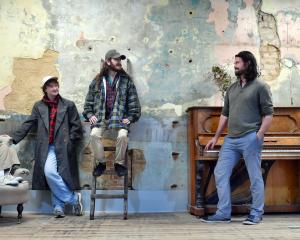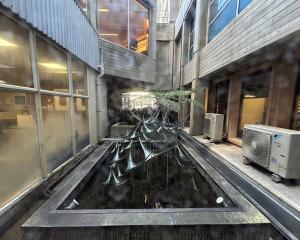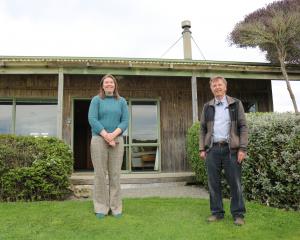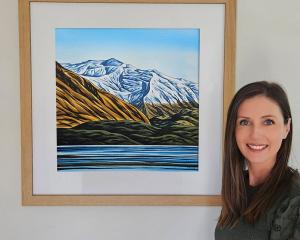Whereas previously her overtly magic realist oil paintings have dominated, in the current exhibition these are paired with graphite images of the same women, drawn as companion pieces to the main works.
I must admit to sometimes having been in two minds about Dolby's work. I could admire the technique and the ability of the artist, but often felt that the portraits were too stylised, too whimsically surreal, too fairytale.
In ''Carnivale'', however, the whimsy has been pared back, and the works benefit greatly as a result. There is still no possibility of mistaking the characters for photographically accurate representations, but if there were the artist would have gone too far in the other direction.
The Modiglianiesque distortions are still present, yet these are undoubtedly human characters. Here, Dolby relies squarely on her fine abilities as a portraitist, and she succeeds excellently.
The accompanying graphite works show another facet of Dolby as an artist, and provide some insight into how the artist sees the faces she paints.
In works such as Porcelain and the fine Britannia, the graphite images bear witness to the detail in texture of fabric and hair that, while evident in the painted works, is often overshadowed by the paintings' overall effect.
The Otago coastline is the subject of an exhibition by Pauline Bellamy and Manu Berry at Macandrew Bay. Both artists are known for their style, but in this exhibition both have developed new advances which have produced some very fine work.
Berry is experimenting with the concept of the three dimensional print. His clifftop scenes are produced from pairs of monoprints; one, shaped to represent a bird, is suspended over the top of the other to produce the effect of a spirit bird floating over the landscape.
The effect is impressive, reaching its height with Shimmering boundaries, a multiple canvas work depicting a swallow darting back and forth around Lover's Leap. Berry, for whom the bird has become something of a regular motif (perhaps inspired by his first name) has also been experimenting with multiple repeated bird images in three screenprinted works on calico.
Bellamy's work has also progressed, with a series of fine acrylic scenes of Aramoana and Tunnel Beach.
Bellamy normally either creates group portraits or empty landscapes, but here has combined the two to create figure in landscape paintings, the composition of which allows each of these two aspects to enhance the other.
The resulting works, somehow reminiscent of 19th century Scandinavian beach scenes, is very effective indeed.
Scott Flanagan and Anet Neutze's art is truly collaborative. The two artists work together on the same intensively worked canvases, which are produced by a combination of stamping and fine detail painting.
The stamping technique, using a modified brush, has elements which reflect traditional Aboriginal art but which are far more closely connected to the Western technique of pointillism.
Images, both realistic and abstract, are built up from repeated layers of square dots, over which the artists then paint with a fine brush, painstakingly outlining and shading to produce works which are as much mandala as painting.
The resulting works, with their washes of pastel block overlaid with intricate brushwork, bear repeated viewing, revealing new facets with each successive return to the canvas.
The more concrete works, such as the painting which names the exhibition, are perhaps less successful than those pieces where realism is only hinted at, such as the vague skull form of Memento Mori.
It is the works where the figurative is completely abandoned for the sensual delights of washes of colour - such as the undulating pastels of Poet Detrital and the shimmering Still Waterings - that are the crowning works of the exhibition, however.
It would be possible to drown in the hypnotic rhythms of this latter piece.












